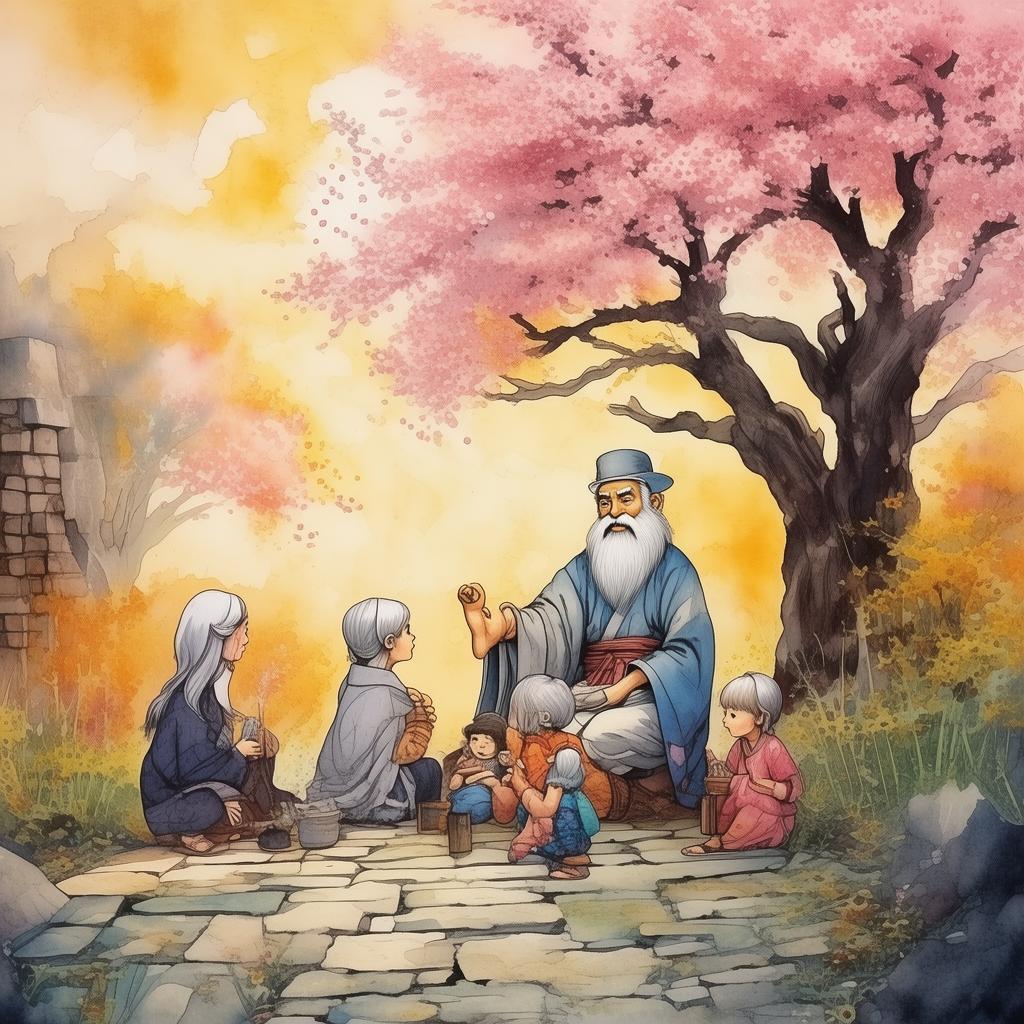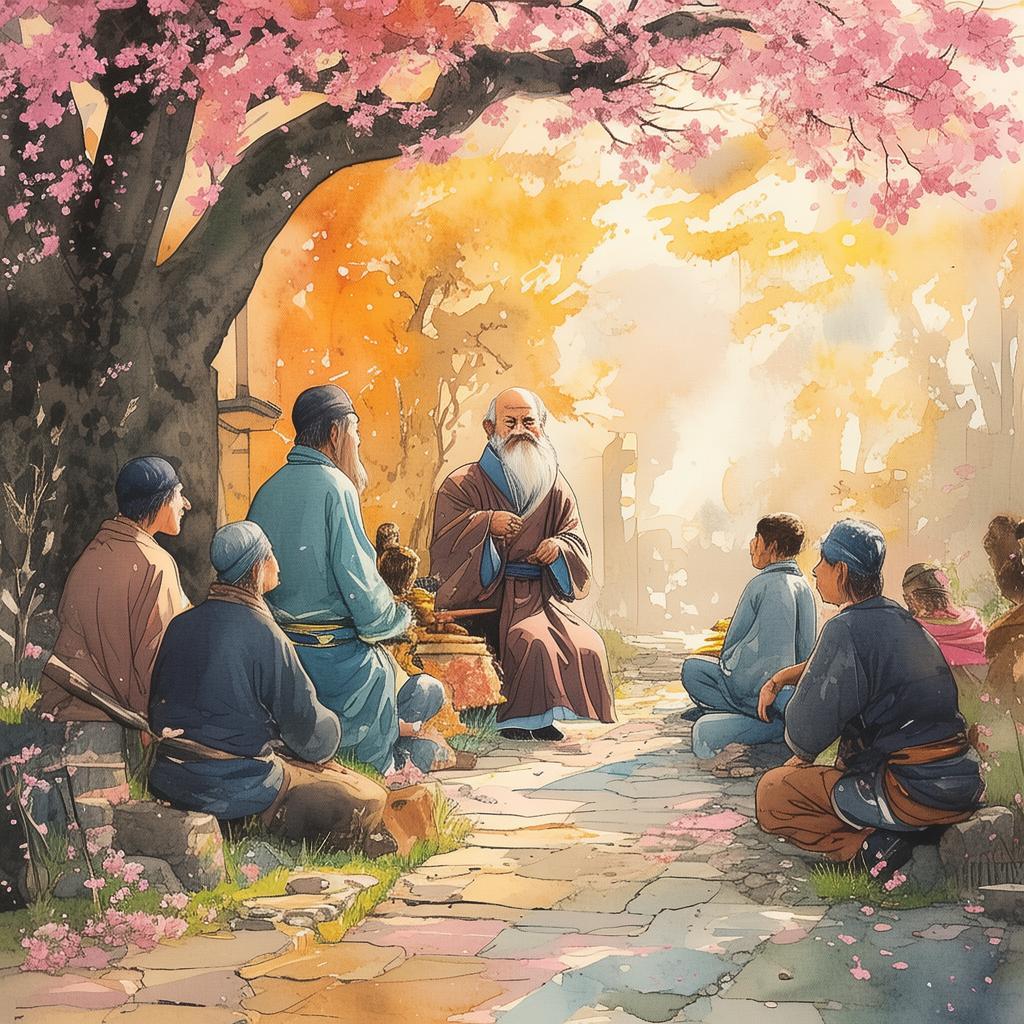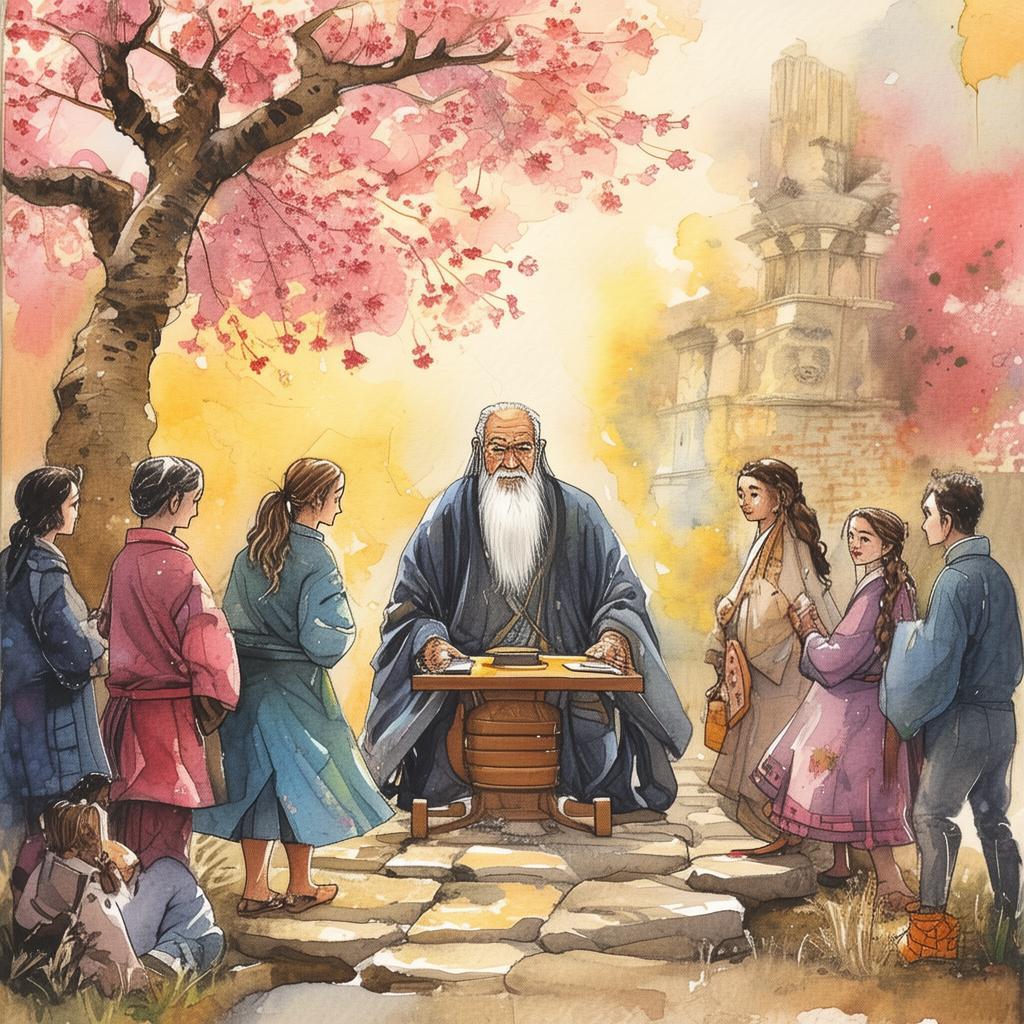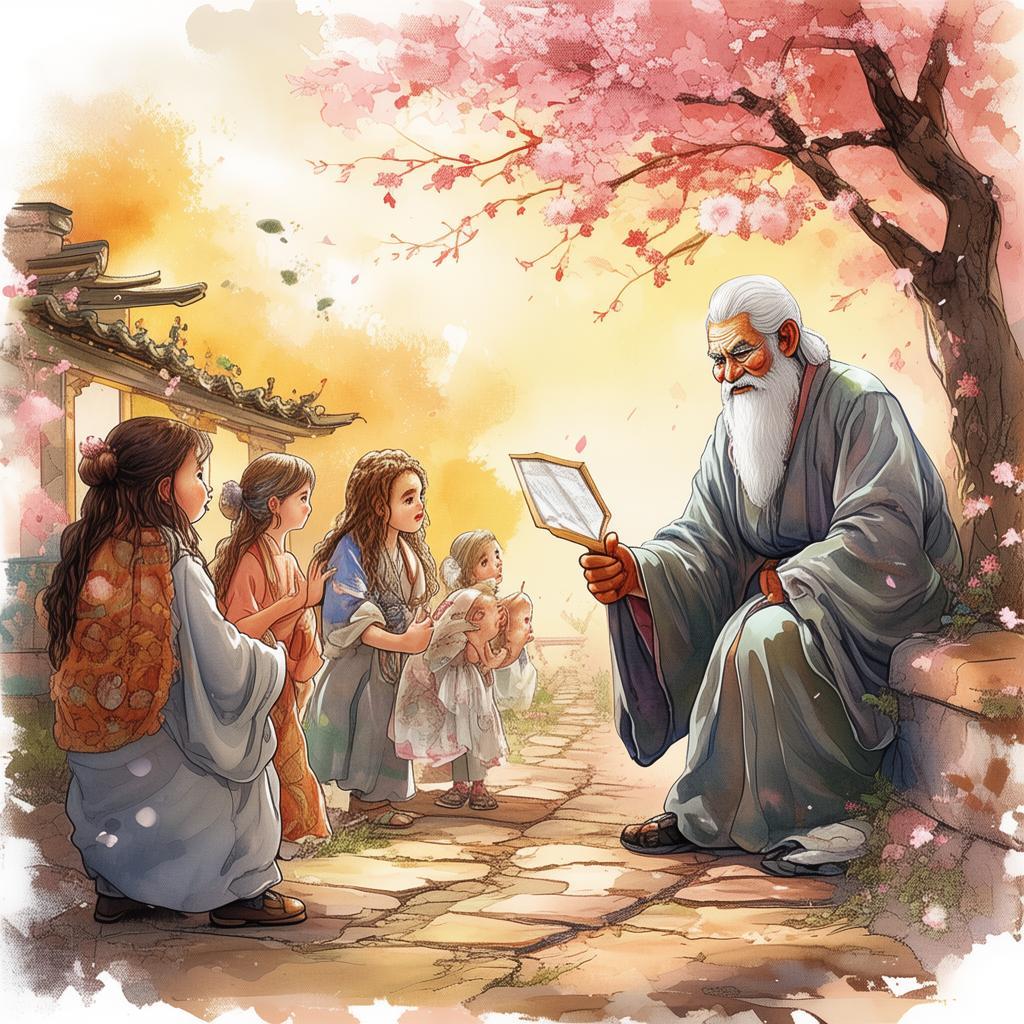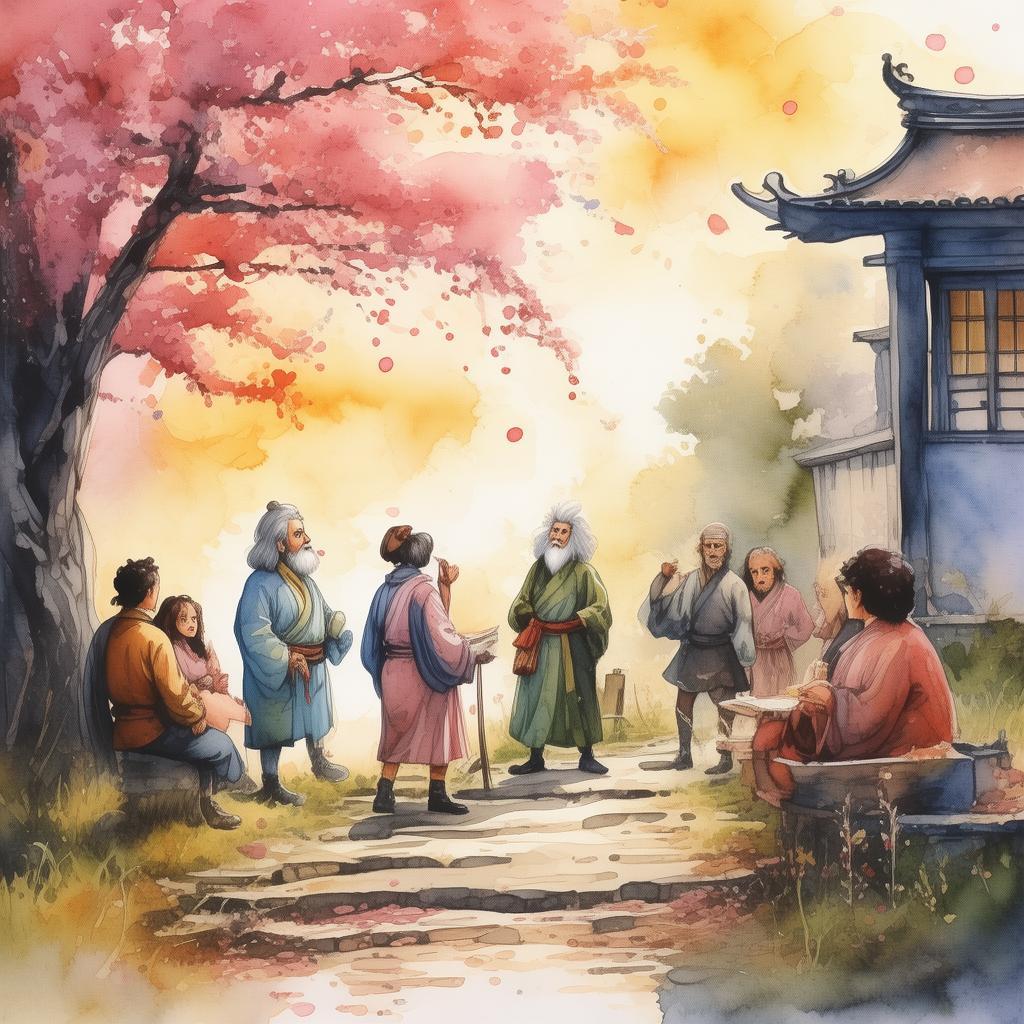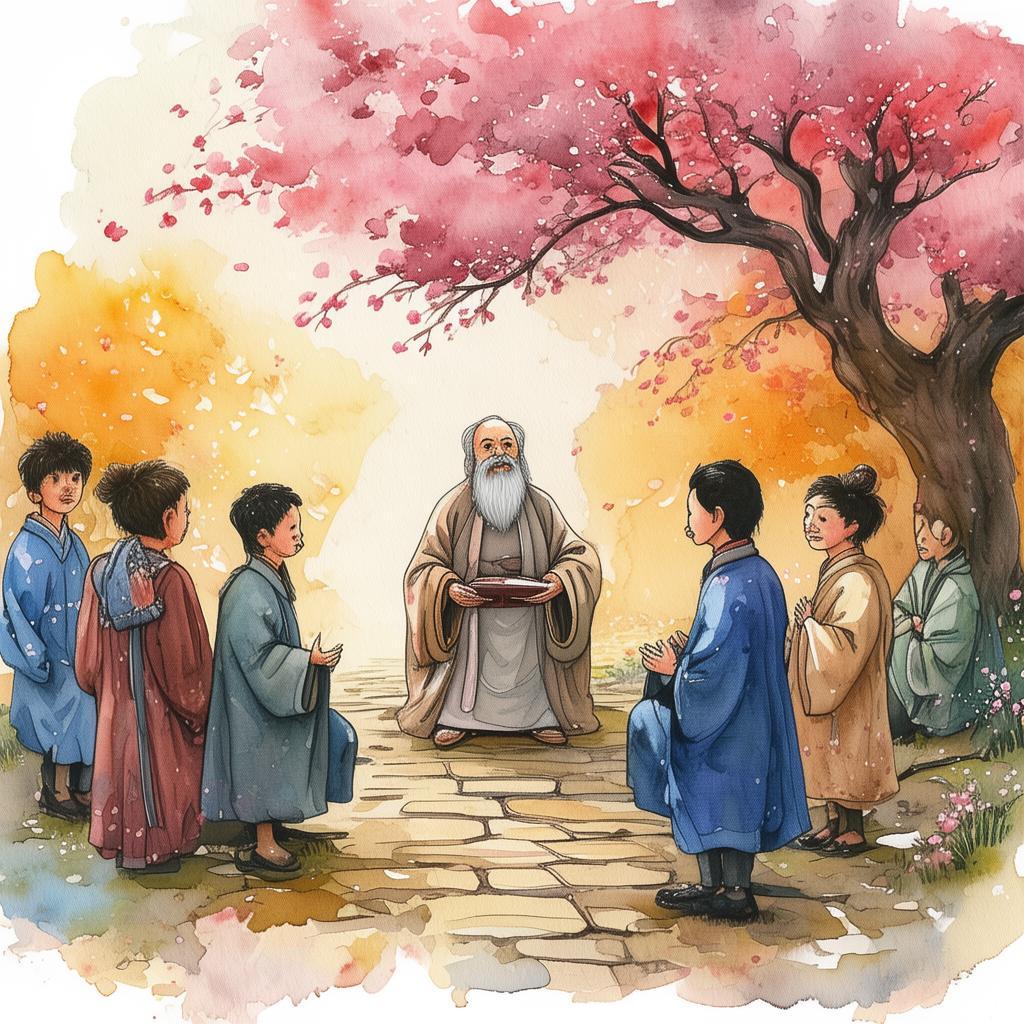The Architect's Fortune: A Design for Riches and Reckoning
In the bustling metropolis of Jingzhou, there was a legend that spoke of an architect whose designs were as unique as they were profitable. His name was Ming, and he was known far and wide for his ability to turn barren land into opulent estates. The story of Ming's rise to fame began with a chance encounter that would change his life forever.
It was a crisp autumn morning when Ming, a young and ambitious architect, wandered into a quaint village on the outskirts of Jingzhou. The village was quaint, with cobblestone streets and traditional architecture. Ming was captivated by the simplicity of the place and felt an inexplicable pull to stay.
As he wandered through the village, he noticed an old man tending to his garden. The man, named Lao, was a master craftsman and a master of traditional architecture. Ming approached Lao, struck by the man's wisdom and the beauty of his work.
"Your craftsmanship is truly remarkable," Ming said, his voice filled with genuine admiration.
Lao looked up, his eyes twinkling with a knowing smile. "And your designs are quite impressive as well. But have you ever considered the cost of your success?"
Ming, taken aback by the sudden question, pondered Lao's words. "What do you mean?"
Lao's gaze was piercing as he continued, "Success often comes with a price, young architect. You must be careful not to lose yourself in the pursuit of riches."
Ming nodded, though he was not quite sure what Lao meant. He spent the next few days in the village, learning from Lao and absorbing the essence of traditional architecture. He felt a newfound sense of purpose and a deep connection to the land.
After several months, Ming returned to Jingzhou, determined to create a masterpiece that would not only showcase his architectural prowess but also reflect the values he had learned from Lao. He began working on a grand estate for a wealthy patron, and the designs were nothing short of spectacular.
As the estate took shape, Ming's reputation grew, and so did his fortune. He was approached by many more patrons, each eager to see his unique vision brought to life. Ming's designs became synonymous with opulence and luxury, and he was soon the most sought-after architect in the region.
One day, as Ming was walking through the streets of Jingzhou, he saw a young girl crying at the edge of a bustling market. Curious, he approached her and asked what was wrong.
"The land where my family's home once stood is being torn down to make way for a new development," the girl explained, her eyes filled with sadness. "My parents are too poor to afford a new home, and I fear they will have nowhere to go."
Ming's heart ached at the girl's plight. He had seen the same thing happen to many families in Jingzhou, and it was a consequence of his own success. He realized that his designs, while beautiful, were also responsible for the displacement of countless people.
That night, Ming lay awake, troubled by his realization. He knew he had to make a change. The next morning, he visited the mayor of Jingzhou and proposed a plan. He would use his fortune to build affordable housing for the displaced families, ensuring that they would have a place to call home.
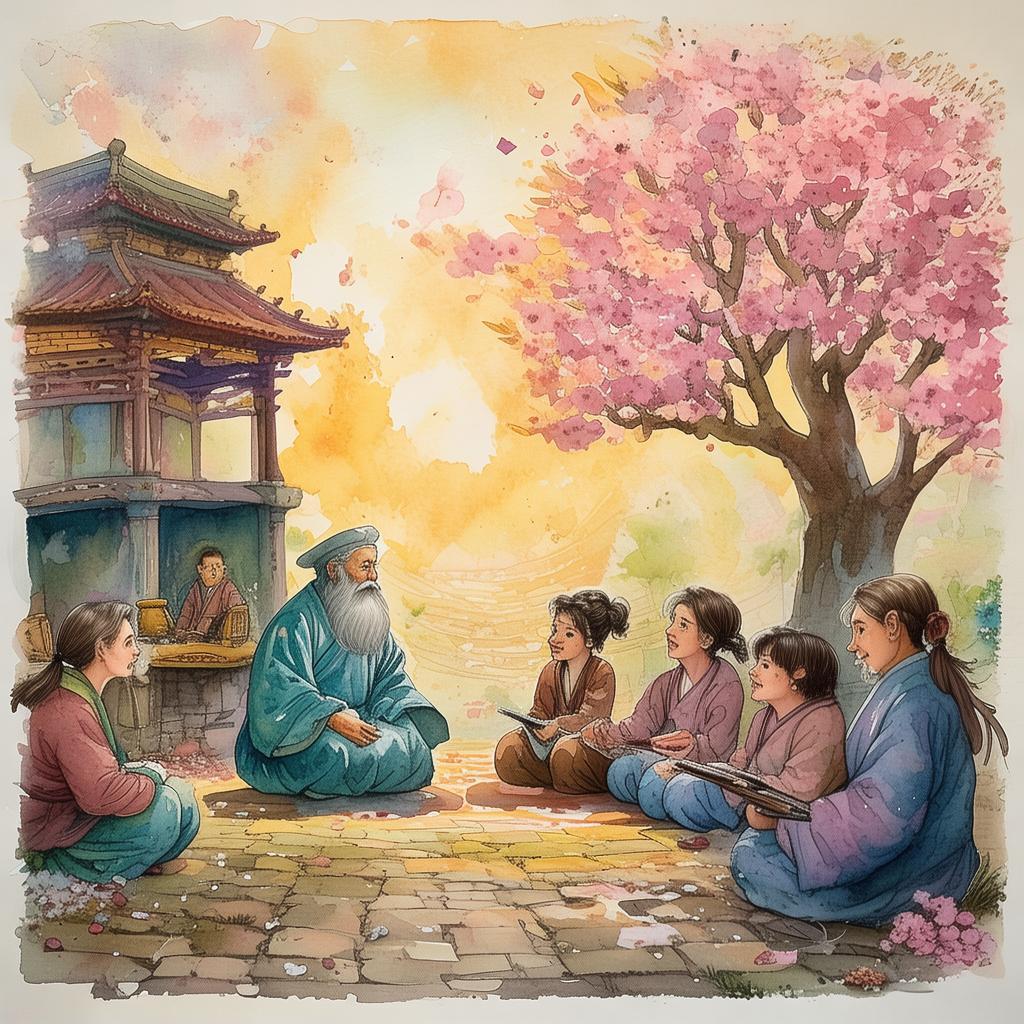
The mayor was hesitant at first, but Ming's passion was infectious. He convinced the mayor to support his plan, and soon, construction began on the new housing developments. Ming's designs were still luxurious, but now they were also sustainable and affordable.
Word of Ming's change of heart spread quickly, and soon, he was hailed as a hero. The once wandering architect had found his true calling: to use his talent not just for personal gain, but for the betterment of society.
As Ming stood before the completed housing developments, he felt a profound sense of fulfillment. He had found the balance between his passion for architecture and his responsibility to the community. The legend of the wandering architect had been rewritten, and it was a tale of riches not just in wealth, but in the hearts of those whose lives he had touched.
In the end, Ming's fortune was not measured in gold or jewels, but in the homes he had built and the lives he had improved. And he had learned a valuable lesson from Lao: that true success comes not from the pursuit of riches, but from the pursuit of a better world.
✨ Original Statement ✨
All articles published on this website (including but not limited to text, images, videos, and other content) are original or authorized for reposting and are protected by relevant laws. Without the explicit written permission of this website, no individual or organization may copy, modify, repost, or use the content for commercial purposes.
If you need to quote or cooperate, please contact this site for authorization. We reserve the right to pursue legal responsibility for any unauthorized use.
Hereby declared.
